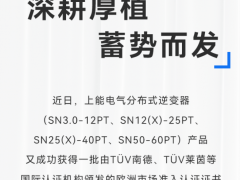It has been the authors experience that the Incidence Angle Modifier (IAM) is poorly understood.
Solar Incident Angle Maths
Imagine, the sun is directly overheat, and that the solar panel mounted along the line of the hypotenuse shown in the diagram. It stands to reason that the concentrated sunlight shing straight down will be spread out or shared over a larger surface area. If effect the shadow in the diagram is the same size as the adjectent side. The equivalent energy of this is shaed over the the larger hypotenuse surface.
This can be worked out with the following formula.
Radiation on Panel = Cosine of Angle (A) multiplied by intensity of radiation.

Example 1 : If A = 30 Degrees. Cosine 30 = 0.866, so if 1000 watts is shining straight down then the panel will only see 866 Watts.
Example 2 : If A = 45 Degrees. Cosine 45 = 0.707, so the incident radiation will be 707 Watts.
What Solar Incident Angle Modifier (IAM) means
When Solar Panels are tested, performance measurements are normally taken with the solar insolation level measured perpendicular to the collector plane (i.e. facing the same direction as the collector). The IAM (Incidence Angle Modifier) values provides a performance factor, so that the output can be calculated when the light is not perpendicular to the collector. This Cosine modification as described in the maths above is NOT taken to account.
An IAM value of 1, means that at a particular incident angle, the output is directly proportional to the cosine of the incident angle multiplied by the full (perpendicular) radiation intensity.
However, at different angles solar panles reflect differing amounts of radiation. In the case of flat plate collectors more radiation is refelcted from the surface the more oblique the incident angle is, so the new IAM will be less than 1.0
In some vacuum tubes, particuarily the double walled type, because there are gaps between the tubes, as the sun tracks across the sky, it still sees a full tube so the output stays constant, even though the maths perdicts that the output should fall by the Cosine factor of the incident angle. In this case the IAM will be greater than 1.0

There are of course two types of IAM.
Horizontal - as the sun tracks from left to right
Vertical - as the sun tracks from low to high.
Some sample graphs below for comparsion.



The IAM can have a dramatic influence on the overall daily output of a panel. As can be seen in the graph below, the Sydney tube panel keeps a much more consistent output over the day when compared to the single walled vacuum tube or the flat plate collector. This effect compensates for the lower optical efficiency that Syndey panels typically have.

IAM use in Simulation Programs
The variation in IAM value is taken into account in some solar simulation programs such as TRNSYS and Polysun, where IAM tables can be entered and edited for each specific collector.

 微信客服
微信客服 微信公众号
微信公众号









0 条